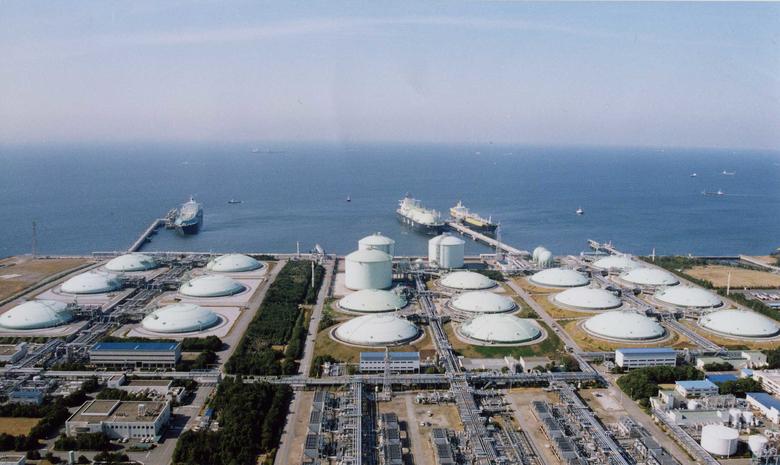
TOO MUCH LNG

Five years ago, energy companies hungry for the next big thing started planning as many as 90 terminals to send natural gas around the globe. Now, it seems the world only needs five more.
Consulting firm IHS says only one in every 20 projects planned are actually necessary by 2025 as weakening Asia economies, cheap coal, the return of nuclear power in Japan and the ever-expanding glut of shale supply in North America temper demand for the power-plant fuel, putting tens of billions of dollars worth of export projects at risk.
Barring an unusually cold winter in Asia, global LNG supply will outstrip demand by next year, said Trevor Sikorski, an analyst at Energy Aspects in London. Seven new plants in Australia will flood the market over the next two years. Cheniere Energy is planning the startup of its Sabine Pass terminal in Louisiana this quarter.
"The global LNG industry now resembles a game of 'musical chairs' with far more projects than the market can absorb," said James Taverner, an IHS analyst in Tokyo. "There is a very narrow window of opportunity for new projects that want to take final investment decision by 2020."
Four years ago, the International Energy Agency predicted global demand for the heating and power plant fuel would climb 16% by 2016. Now, it's projecting 11%, and terminal developers are taking note. Excelerate Energy's floating terminal in the Gulf of Mexico has been postponed. Inpex delayed the start of an LNG project in Australia by almost a year to the third quarter of 2017.
"It will be increasingly difficult to convince financial institutions to put major sums of money on the table to construct additional capacity," said Tim Boersma, acting director of the Energy Security and Climate Initiative at the Brookings Institution in Washington.
North America
More than half of the 38 terminals proposed for the contiguous US may never be built, according to Fitch Ratings and the Brookings Institution, a nonprofit research group. Besides Cheniere's Sabine Pass, projects in development include Freeport LNG's terminal in Texas, Dominion's Cove Point in Maryland and the joint Lake Charles LNG venture in Louisiana between Energy Transfer and BG Group.
Twenty more terminals are planned for Canada, according to Energy Aspects, including the Kitimat project proposed by Chevron Corp. and Woodside Petroleum Ltd. in British Columbia. The higher costs associated with projects there, in part because of environmental opposition, makes it even less likely that they'll be built, Jeffrey Currie, head of commodities research at Goldman Sachs & Co. in New York, said in a Sept. 24 interview.
This deluge of North American gas exports was once seen as displacing some foreign supplies linked to the price of oil. Then the oil market crashed and crude lost half its value, and now that gas from abroad is looking cheap.
The pace of project postponements will pick up as the supply glut expands, Noel Tomnay, head of global gas and LNG research at Wood Mackenzie in Edinburgh, said in a Sept. 3 report. Development of even half of the capacity may keep the Asian market oversupplied through 2025, he said.
Australia's Gas
While the US LNG projects already under construction will probably come to fruition, any supply not already contracted will be difficult to find a home for, particularly in Asia where Australian gas is easy to come by, Currie said.
Spot LNG prices for delivery to Northeast Asia have slid 56% over the past year, according to data compiled by World Gas Intelligence. Shipments to Japan will average $5.80 per million British thermal units in 2015, a 65% decline from 2013, according to Energy Aspects.
The world's demand for gas meanwhile expanded by only 0.4% in 2014, the smallest gain since 2009, because of shrinking imports to Japan, South Korea, India and China, Bank of America said in an Aug. 21 note to clients.
"Given the price environment and the supply that's going to come online in the next five years or so," said Dino Kritikos, an analyst at Fitch in Chicago, "many of these projects are at an inherent disadvantage."
gasprocessingnews.com
-----
More:




